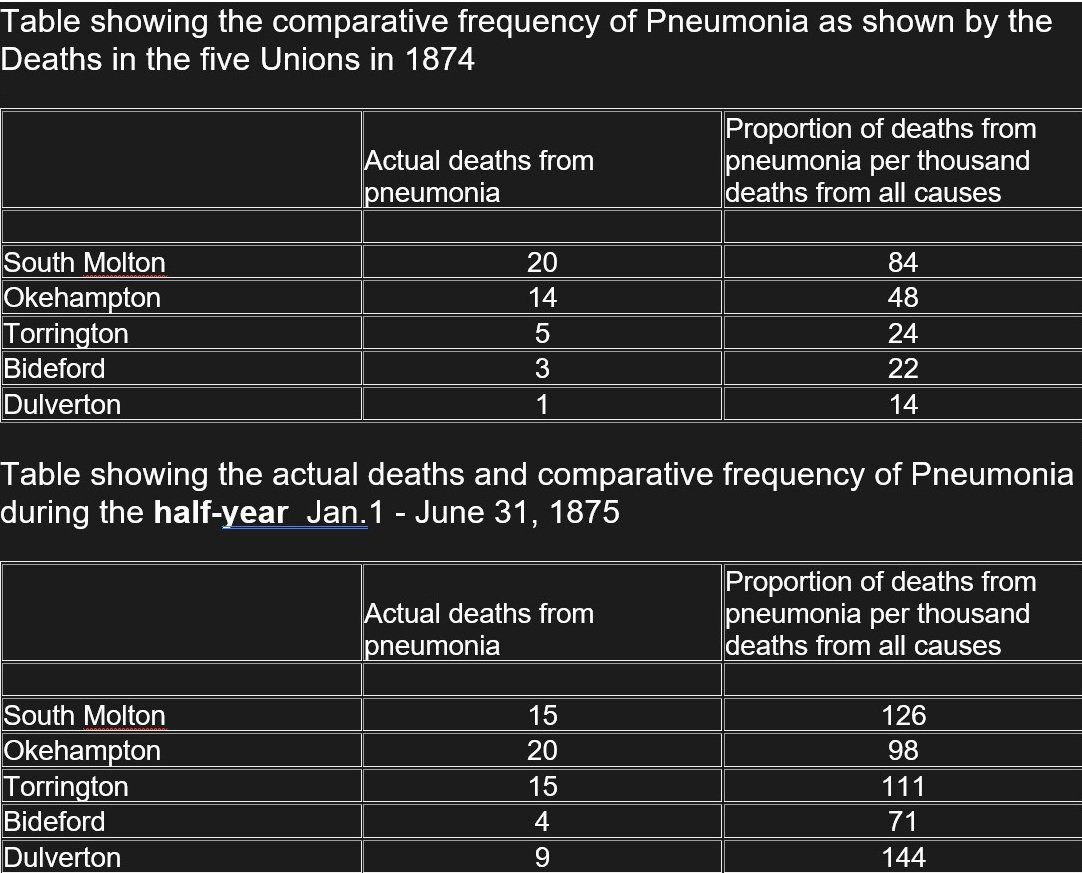Alexander Wynter Blyth
Alexander Wynter Blyth was born in 1845 in Woolwich, when his father was the naval surgeon on the convict hospital ship HMS Unite. His grandfather had also been a naval surgeon; his father and grandfather (both named Alexander) had previously worked together at Melville Naval Hospital in Chatham.
In 1864, with a medical background but without qualifications, he worked as an assistant in a practice in Aylesbury. That December he married farmer's daughter Ann Elizabeth Morgan in Glascoed, Monmouthshire. He then became a student at King's College Hospital in London, where he qualified LSA MRCS in 1870. At some stage he also became a barrister.
He then worked in general practice as the surgeon to the Worcester Amalgamated Friendly Societies. This was a club, members paying four shillings annually for their health care. In his report of 1872 he reported a local outbreak of smallpox affecting 32 patients, five of whom died.
In November 1873 he successfully applied for the new post of Medical Officer of Health for the Bideford, South Molton, Dulverton, and Okehampton Rural Sanitary Authorities. The following year was also appointed County Analyst for Devon. He made his home in Barnstaple.
His job entailed investigating and controlling epidemics, removing “nuisances” e.g. sewerage contaminating water supplies, and analysis of foodstuffs for adulteration, identifying poisons etc.
In 1875 he described an outbreak of an infectious form of pneumonia in North Devon - although it is not clear what the likely causative organism was. However he showed that there were three times as many deaths from pneumonia in the first six months of 1875 compared to what would have been expected from the previous year's figures. (Lancet 1875 Sep 18, page 416.)

Towards the end of 1879 some of the sanitary authorities decided that they couldn't afford his services. He therefore resigned but quickly was appointed to a similar post in Marylebone. He was retained as Devon County Analyst.
From 1876 he was a prolific author, writing articles on public health and analytical chemistry, particularly concerning adulteration of food. He wrote two major textbooks, “Foods: Their Composition and Analysis” and “Poisons: Their Effects and Detection”, the fifth edition of which was published in 2008. He even analysed “The Composition of Devonshire Cream”, (A. Wynter Blyth (1879), Analyst, 4, 141).
Composition of Devonshire Cream
Per cent
Water 28.675
Caseine 3.530
Albumin .521
Galactin .050
Lactochrome undetermined
Milk Sugar 1.723
Milk Fat 65.011
Ash .490
Chlorine in Ash .013
Calcic Phosphate .373
He was first to isolate “Lactochrome” now known as Riboflavine or vitamin B2, in 1879.
He was president of the Incorporated Society of Medical Officers of Health and, in 1885, secretary of the “Society of Cyclists”.
He and his wife Anne Elizabeth had four children. She died in 1906 in Cairo; he died at his London residence in 1921
